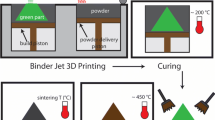Abstract
The wrapping layer’s foaming process of the car steering wheel industry usually relies on the manual parameter setting by experienced engineers, but the reliability and validity are usually hard to control due to many foaming factors that affect the hardness of steering wheel wrapping layer (e.g., vulcanization time, mold temperature, material liquid temperature, material discharge pressure, humidity). This paper first proposes an intelligent process parameter recommendation system architecture, then develops a neural network-based hardness prediction (NNHP) model to predict the car steering wheel’s wrapping hardness. Consequently, we combine NNHP and genetic algorithm (GA) to develop a foaming process parameter recommendation model (NNHP-GA) to effectively recommend the most suitable combinations of process parameters for achieving the desired wrapping hardness in an IoT-based intelligent manufacturing environment. An empirical study is applied in Taiwan’s world-leading car steering wheel company. By analyzing the 16 important process sensor data installed in each casting machine, the five experimental results show that the NNHP-GA recommendation system can successfully predict the hardness of the steering wheel’s wrapping layer and recommend appropriate process parameters (e.g., sensors S1-vulcanization time, S2-mold temperature, S5-A.P. pressure, S6-B.I. pressure, and “pressurization time”) under a specific hardness target. The manufacturing company may employ the NNHP-GA model to build a process parameter recommendation system and increase the quality of process parameter setting.








Similar content being viewed by others
References
Couchman C, Fulthorpe M (2021) Automotive monthly newsletter and podcast. https://ihsmarkit.com/research-analysis/fuel-for-thought-auto-demand-levels-remain-depressed-on-chip-famine.html. Accessed 30 Jan 2022
Ayvaz S, Alpay K (2021) Predictive maintenance system for production lines in manufacturing: a machine learning approach using IoT data in real-time. Expert Syst Appl 173:114598. https://doi.org/10.1016/j.eswa.2021.114598
Ansari F, Erol S, Sihn W (2018) Rethinking human-machine learning in industry 4.0: How does the paradigm shift treat the role of human learning? Procedia Manuf 23:117–122. https://doi.org/10.1016/j.promfg.2018.04.003
Shah D, Wang J, He QP (2020) Feature engineering in big data analytics for IoT-enabled smart manufacturing–comparison between deep learning and statistical learning. Comput Chem Eng 141:106970. https://doi.org/10.1016/j.compchemeng.2020.106970
Zhang J, Chen M, Hong X (2021) Nonlinear process monitoring using a mixture of probabilistic PCA with clusterings. Neurocomputing 458:319–326. https://doi.org/10.1016/j.neucom.2021.06.039
Shi X, Nie F, Lai Z, Guo Z (2018) Robust principal component analysis via optimal mean by joint ℓ2, 1 and Schatten p-norms minimization. Neurocomputing 283:205–213. https://doi.org/10.1016/j.neucom.2017.12.034
Wang ZX, He QP, Wang J (2015) Comparison of variable selection methods for PLS-based soft sensor modeling. J Process Control 26:56–72. https://doi.org/10.1016/j.jprocont.2015.01.003
Dong J, Zhang K, Huang Y, Li G, Peng K (2015) Adaptive total PLS based quality-relevant process monitoring with application to the Tennessee Eastman process. Neurocomputing 154:77–85. https://doi.org/10.1016/j.neucom.2014.12.017
Zekić-Sušac M, Has A, Knežević M (2021) Predicting energy cost of public buildings by artificial neural networks, CART, and random forest. Neurocomputing 439:223–233. https://doi.org/10.1016/J.NEUCOM.2020.01.124
Lu B, Chen Z, Zhao X (2021) Data-driven dynamic predictive maintenance for a manufacturing system with quality deterioration and online sensors. Reliab Eng Syst 212:107628. https://doi.org/10.1016/j.ress.2021.107628
Mongan PG, Hinchy EP, O’Dowd NP, McCarthy CT (2021) Quality prediction of ultrasonically welded joints using a hybrid machine learning model. J Manuf Process 71:571–579. https://doi.org/10.1016/j.jmapro.2021.09.044
Patil DB, Nigam A, Mohapatra S (2021) Image processing approach to automate feature measuring and process parameter optimizing of laser additive manufacturing process. J Manuf Process 69:630–647. https://doi.org/10.1016/j.jmapro.2021.07.064
Wang Z, Wang S, Wang S, Zhao Z, Tang Q (2022) An intelligent process parameters determination method based on multi-algorithms fusion: a case study in five-axis milling. Robot Comput Integr Manuf 73:102244. https://doi.org/10.1016/j.rcim.2021.102244
Mishra D, Roy RB, Dutta S, Pal SK, Chakravarty D (2018) A review on sensor based monitoring and control of friction stir welding process and a roadmap to Industry 4.0. J Manuf Process 36:373–397. https://doi.org/10.1016/j.jmapro.2018.10.016
Zhang Z, Wen G, Chen S (2019) Weld image deep learning-based on-line defects detection using convolutional neural networks for Al alloy in robotic arc welding. J Manuf Process 45:208–216. https://doi.org/10.1016/j.jmapro.2019.06.023
Wang Q, Jiao W, Wang P, Zhang Y (2021) A tutorial on deep learning-based data analytics in manufacturing through a welding case study. J Manuf Process 63:2–13. https://doi.org/10.1016/j.jmapro.2020.04.044
Tomaz IDV, Colaço FHG, Sarfraz S, Pimenov DY, Gupta MK, Pintaude G (2021) Investigations on quality characteristics in gas tungsten arc welding process using artificial neural network integrated with genetic algorithm. Int J Adv Manuf 113:3569–3583. https://doi.org/10.1007/s00170-021-06846-5
Ktari A, El Mansori M (2021) Intelligent approach based on FEM simulations and soft computing techniques for filling system design optimisation in sand casting processes. Int J Adv Manuf 114:981–995. https://doi.org/10.1007/s00170-021-06876-z
Zhao J, Wang R, Jiang E, Ji S (2021) Research on a new method for optimizing surface roughness of cavitation abrasive flow polishing monocrystalline silicon. Int J Adv Manuf 113:1649–1661. https://doi.org/10.1007/s00170-021-06667-6
Wang JH, Lo YL, Wang HY, Tran HC (2020) Multi-objective optimization framework for five-pass wire-drawing process. Int J Adv Manuf 107:3049–3063. https://doi.org/10.1007/s00170-020-05226-9
Devan P, Khare N (2020) An efficient XGBoost–DNN-based classification model for network intrusion detection system. Neural Comput Appl 32:12499–12514. https://doi.org/10.1007/s00521-020-04708-x
Funding
The authors gratefully acknowledge the Minister of Science & Technology, Taiwan, R.O.C., for the support under contract MOST 110-2221-E-029-024-MY3.
Author information
Authors and Affiliations
Contributions
Wang and Chen contributed to the analysis of the results and the manuscript’s writing/review/editing. Hsu contributed to the data preprocess and analysis.
Corresponding author
Ethics declarations
Competing interests
The authors declare no competing interests.
Additional information
Publisher's Note
Springer Nature remains neutral with regard to jurisdictional claims in published maps and institutional affiliations.
Rights and permissions
Springer Nature or its licensor holds exclusive rights to this article under a publishing agreement with the author(s) or other rightsholder(s); author self-archiving of the accepted manuscript version of this article is solely governed by the terms of such publishing agreement and applicable law.
About this article
Cite this article
Wang, LC., Chen, CC. & Hsu, CC. Applying machine learning and GA for process parameter optimization in car steering wheel manufacturing. Int J Adv Manuf Technol 122, 4389–4403 (2022). https://doi.org/10.1007/s00170-022-09870-1
Received:
Accepted:
Published:
Issue Date:
DOI: https://doi.org/10.1007/s00170-022-09870-1




